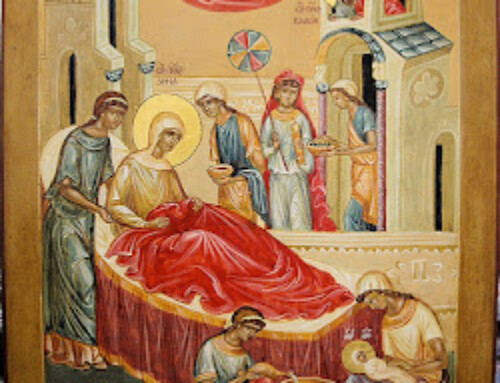Word Magazine February 1967 Page 21
THE SYMBOL OF LOVE
By Adma Shakhashiri
Commission on “THE WORD” Department of Religious Education
Troparion of The Cross: “Lord, save Thy people, and bless Thine inheritance, giving us victory over all who assail us, and protecting the Church of Thy Faithful by Thy Cross.”
The Cross is the sign of our Lord Jesus Christ, the Son of God, who came down to earth because he loves us. He suffered and gave His life for us and was crucified on a cross. Since that important event of the Crucifixtion, the Cross became the precious and most prominent symbol of Christ’s love to all the Christians. Just like when people put their initials or some other sign or symbol on their belongings that they want to mark as their own, so do we the Orthodox Christians mark ourselves by the sign of the Cross to show that we belong to Jesus Christ.
At the beginning and end of every prayer, we make the sign of the Cross upon ourselves with faith and reverence saying, “In the name of the Father, and of the Son, and of the Holy Spirit, Amen.” We say those words to make it clear that we want to belong to God and serve Him alone. We also cross ourselves when we enter the Church or approach any sacred object or kiss an Icon, and many times during the Liturgy. We should make the sign of the Cross in the morning in order to obtain God’s blessing for the day, and in the evening to ask His protection during the night. We also cross ourselves at all important moments of our life when in joy, sorrow or danger, as well as at mealtime to invoke God’s blessing and give Him thanks.
The sign of the Cross yields power to us. We should make it not only with the fingers, but with our love and faith because it is a symbol of power. It is also a source of knowledge of the Holy Trinity.
Crosses are placed on church buildings, on Books of the Holy Gospels, on the priestly vestments, on banners, in our homes, and over the graves of the departed. The bishops and priests wear Crosses on their chests because they dedicate their lives to the service of Christ. All the Orthodox also wear baptismal crosses because we belong to Christ since we were baptized.
Many years ago, Constantine the Roman Emperor was a pagan who did not confess the Christian Faith. But he himself had felt sympathy towards the Christians in those days. When facing a battle against the barbarians, he prayed for help. While asleep that night, he saw a vision and he saw the sign of the Cross in the sky. On the Cross were the words “By This Sign Conquer.” Later, in a dream, Jesus Christ appeared to him with the same sign and told him to make a likeness of the Cross on the banner of his army as a safeguard against all enemies. Constantine obeyed all the instructions and his armies won the battle. After that victory, Constantine became a devout Christian and built many churches. His love to Jesus Christ made him send many expeditions to the Holy Land to search for the Cross on which Jesus was crucified. His mother, Empress Helen, also traveled to Jerusalem for the same purpose. Finally she was able to find the Precious and Life-Giving Cross after a long and tedious search.
The Orthodox form of the Cross is a little different from other forms that we see outside the Orthodox Church. It is also called the Russian Cross because it is a replica of the Cross planted by St. Andrew the Apostle over the Caucasian mountains. The ordinary cross has a long bar (up and down) and a shorter bar crossing it a little above center. In addition to this, the Orthodox Cross has a short bar above the center bar that stands for the “tablet” on which was written in Greek, Latin and Hebrew: “This is Jesus the King of the Jews.” The shorter slanting bar on the lower part of the Cross served to support the feet of the crucified Lord. It is made to point upwards to remind us that our Lord Jesus Christ shows us the way to Heaven.

